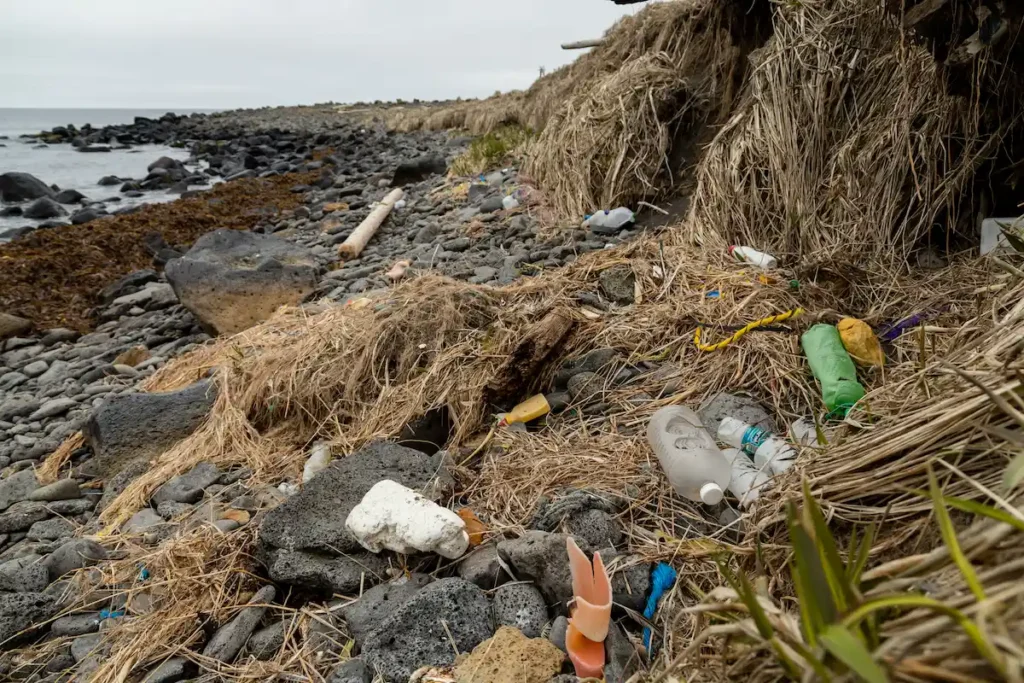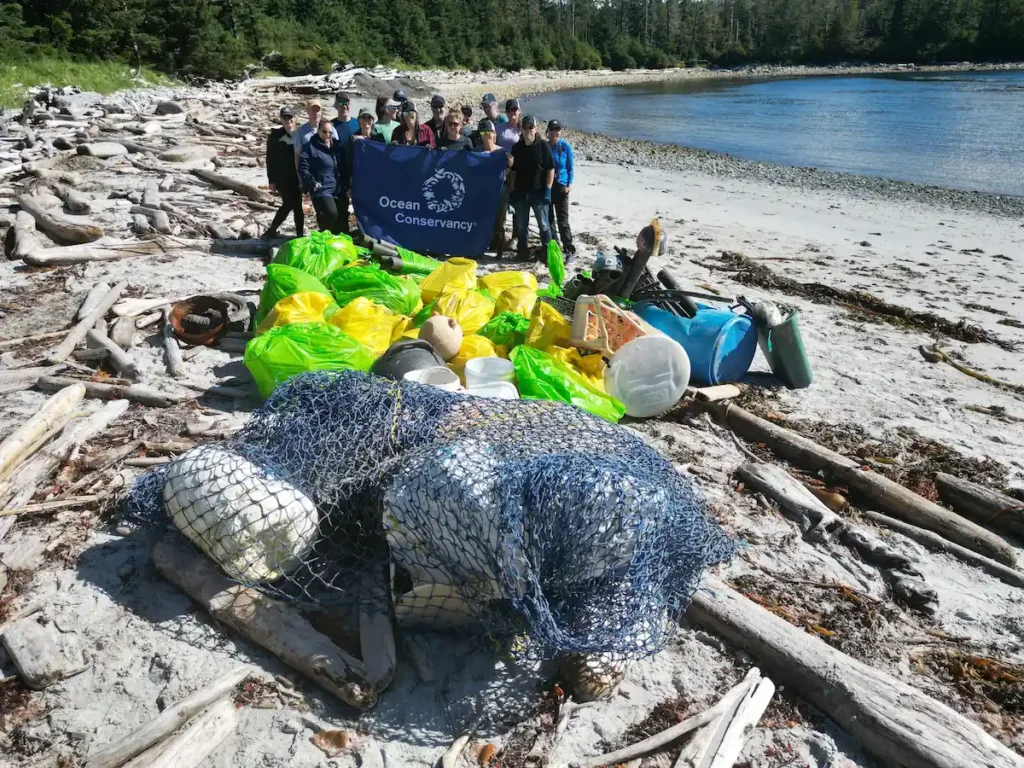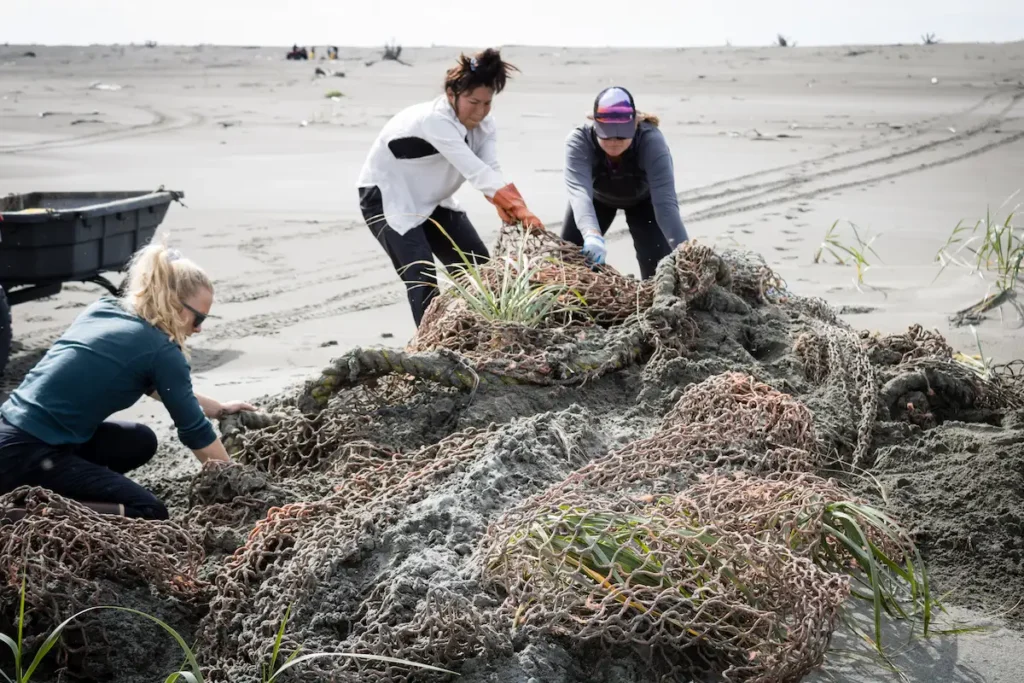The Arctic Marine Debris Initiative
Arctic-wide cleanup to combat plastic pollution in the Arctic.
Did you know that marine debris is now found in all corners of the world from the sea surface to the seafloor to the most remote beaches in the Arctic? Remote places like the Arctic aren’t immune to the influx of trash flowing into our ocean. Plastic and marine debris is a growing part of the Arctic landscape. In fact, a recent study found microplastics (plastic particles less than five millimeters in size) in snow samples collected from remote regions of the Arctic. This trash isn’t likely originating in the Arctic. Researchers found much of the plastic particles are tiny, weathered and aged, indicating that they have been traveling the seas for decades—fragmenting into smaller and smaller pieces along the way.
Plastics in the Arctic
Debris in the Arctic accumulates on beaches that provide important habitat for seals, sea lions and seabirds. It can entangle and harm marine mammals, birds and fish that are important for subsistence, commercial, and recreational uses.
Just how difficult is it to remove marine debris in the Arctic?
Removing marine debris from shorelines in the Arctic can be difficult, dangerous and expensive. When it accumulates on remote beaches, community members are left to deal with it, even though they did not create the problem themselves; and they often lack the resources and infrastructure to remove and dispose of it safely.

The Arctic Marine Debris Initiative: Teaming up for a Healthier Arctic Ocean
For years, Ocean Conservancy has been working with partners across the Arctic to clean some of the most remote shorelines in the world. We are excited to expand these efforts in the region through the new Arctic Marine Debris Initiative, which leverages the expertise and connections of our Arctic and Trash Free Seas® programs. Through this Initiative, Ocean Conservancy is engaging with communities currently involved in marine debris and cleanup efforts, and building new partnerships across the Arctic region.
Arctic Coastal Cleanup
In collaboration with partners across Alaska as well as International Coastal Cleanup®(ICC) partners representing the broader Arctic region, Ocean Conservancy has launched the Arctic Coastal Cleanup. The Arctic Coastal Cleanup leverages partnerships with local organizations, community leaders and regional experts, to identify and remove debris from the region’s unique and often remote shorelines and waterways. Through tracking and removing debris specific to the region, the effort will also raise awareness of the threat plastic pollution poses to the diverse ecosystems and wildlife who call it home. We will work with partners to provide planning support and implementation of safe, successful cleanups, including a suite or resources and data collection tools that the ICC is known for. At the end of each cleanup season, Ocean Conservancy will compile and disseminate data summaries to the network of participating Arctic nations and contributing partners. Comparable data will add to our collective understanding of how debris plagues the Arctic specifically, and help steer solutions that make sense for local communities and prevent more marine debris in the future. If you’re interested in joining the Arctic Coastal Cleanup, contact our Arctic Marine Debris Manager.
In the Arctic, we are seeing plastic pollution in every form. Tiny microplastics are transported by wind and sea, and then settle deep into the ice. Lost fishing gear and other marine debris, often made of plastics, wash up on Alaskan shorelines by the ton. Arctic ecosystems are already vulnerable due to warming temperatures and climate change, so we must take action to protect the sensitive species and communities that call this place home. Together, we can do just that.

Alaska Marine Debris
The ocean is an integral part of life for coastal communities and wildlife in Alaska.
Alaska communities and Tribes have stewarded and depended on ocean resources for millennia, and Alaska’s marine ecosystems support many important and iconic species from endangered Steller sea lions, Pacific walrus and Northern fur seals to Humpback whales, polar bears and all five species of Pacific salmon. Nearly 100 million seabirds depend on healthy marine ecosystems in Alaska during some part of the year for feeding and breeding habitat.
Huge quantities of marine debris wash in to our shores from faraway places, very little comes from local sources. Fishing lines, nets and ropes, and other plastic fishing gear and debris foul our beaches and threaten our marine mammals and birds. Ocean Conservancy has been a valuable partner in enhancing our efforts to remove debris and seek solutions to this global problem.
The Alaska Marine Debris Problem
Alaska has more than 44,000 miles of shoreline, much of which is remote, disconnected from easy transport and difficult to access. Nonetheless, ocean currents bring tremendous quantities of debris to those beaches from all over the globe, harming vital wildlife, local economies and threatening subsistence. Of the more than 3 million pounds of debris that has been removed and documented in cleanups in Alaska, more than 80% is derelict fishing gear, most of which is made from plastic, and the vast majority of which did not originate in the community from which it was removed.
Alaskan Community and Tribal-Led Cleanup Efforts
In Alaska, cleaning debris from beaches takes unique partnerships among communities, Tribes, NGOs and industry. Community members and partner organizations work together; one plastic bottle, one buoy and one fishing net at a time. Ocean Conservancy is working with partners across the state to support efforts to remove marine debris and raise awareness of the issue. We are also engaged in collecting data, supporting science and working toward policy solutions.

Removing Debris Through Backhaul
One of the unique challenges in Alaska is disposing of debris once it is removed from beaches. Often, collected marine debris ends up sitting in communities because there is no viable way to dispose of or recycle it locally; nor is there funding available to transport debris to landfills or recycling centers. Ocean Conservancy is working with partners to develop and fund a program to remove and recycle collected marine debris.
Alaska Partners
The growing network of partners working on marine debris issues in Alaska is made up of communities, Tribes, non-profit organizations, local municipalities and federal agencies. Many of these partners have come together to develop a Marine Debris Regional Action Plan for Alaska, which will highlight actions, needs and priorities related to marine debris in the State. This effort is being led by the NOAA Marine Debris Program and Alaska Sea Grant. Ocean Conservancy is happy to provide connections to this growing network of partners throughout the state and region. Please reach out if you would like us to connect you.